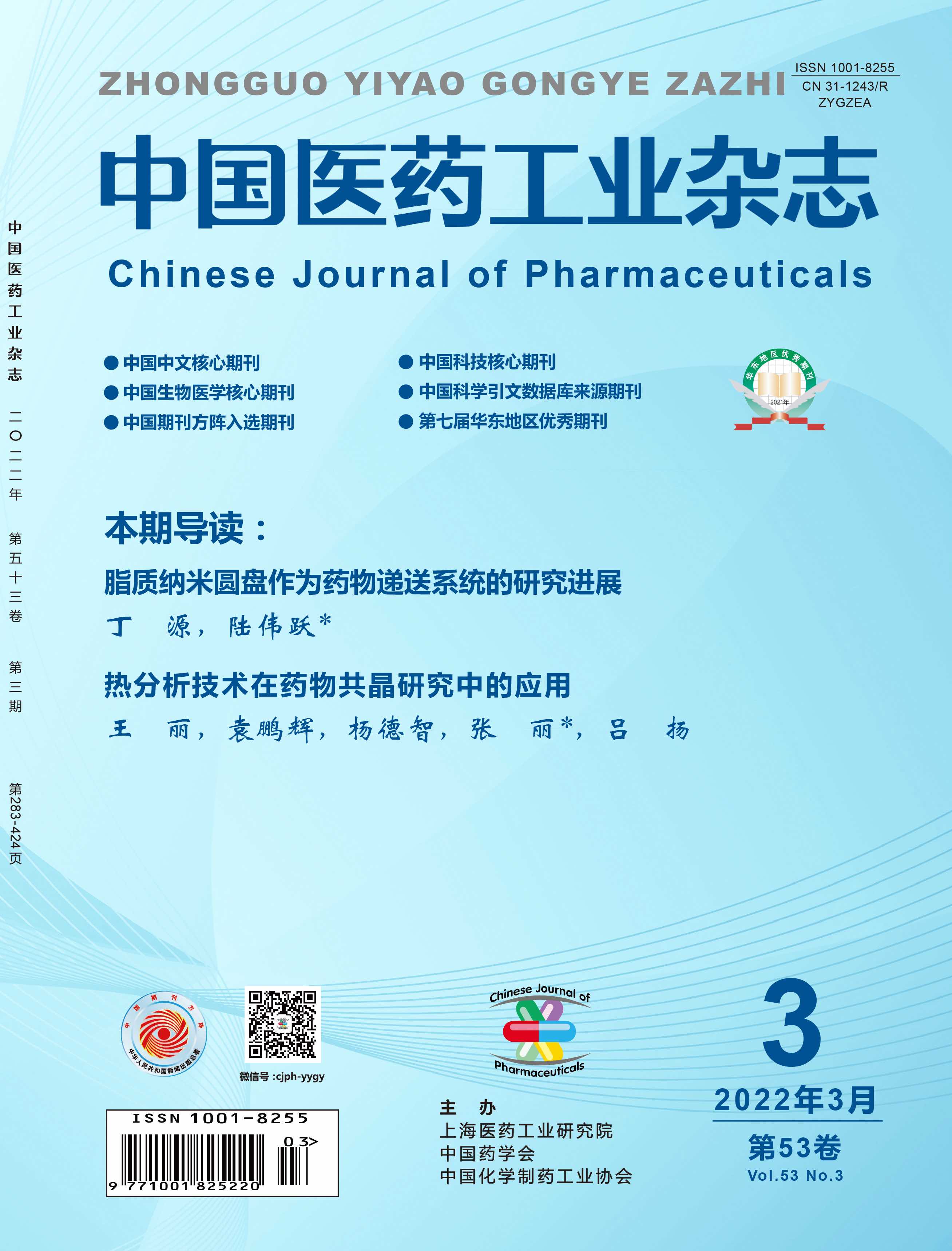Paper
ZHANG Ying, XU Xiaqing, HE Meng, ZHANG Yueli, YANG Xiaorui, ZHANG Zhenzhong, GUO Xinhong
The photosensitive liposomes co-loaded with docetaxel(1) and fullerene C60 malonic acid derivative(2), a photosensitizer, were constructed by thin film dispersion method. The particle size, ζ potential, appearance, encapsulation efficiency, in vitro release, cytotoxicity of the prepared liposomes(1-2-LP) were characterized. The effects on reactive oxygen species(ROS) expression, cell cycle and apoptosis of the tumor cells, and in vivo anti�tumor activity in mice were also performed. The results showed that the particle size and ζ potential of the 1-2-LP were (170.4±1.3)nm and (–31.28±1.09)mV. The observation of transmission electron microscopy revealed that the product was quasi-spherical and uniform. The encapsulation efficiencies of 1 and 2 were (86.38±0.99)% and (93.81±1.06)%. The release of 1 from the 1-2-LP was unaffected by the addition of 2, and the cumulative release of 1 within 50 h was 78%. The 1-2-LP could significantly inhibit the proliferations of human cervical cancer(HeLa) cells and mouse melanoma(B16-F10) cells under the irradiation of laser at 532 nm for 3 min. The detection results of ROS showed that 1-2-LP enhanced the fluorescence intensities of HeLa and B16-F10 cells under the laser irradiation. The results of flow cytometry showed the 1-2-LP combined with laser irradiation changed the cell cycle of the tumor cells and promoted their early apoptosis. The in vivo test in B16-F10 tumor-bearing mice showed that the tumor growth of the mice in 1-2-LP combined with laser irradiation group was significantly inhibited with the inhibitory rate of 85.33%, showing a synergistic antitumor effect of the liposomes co-loaded with 1 and 2 in combination with laser irradiation.
